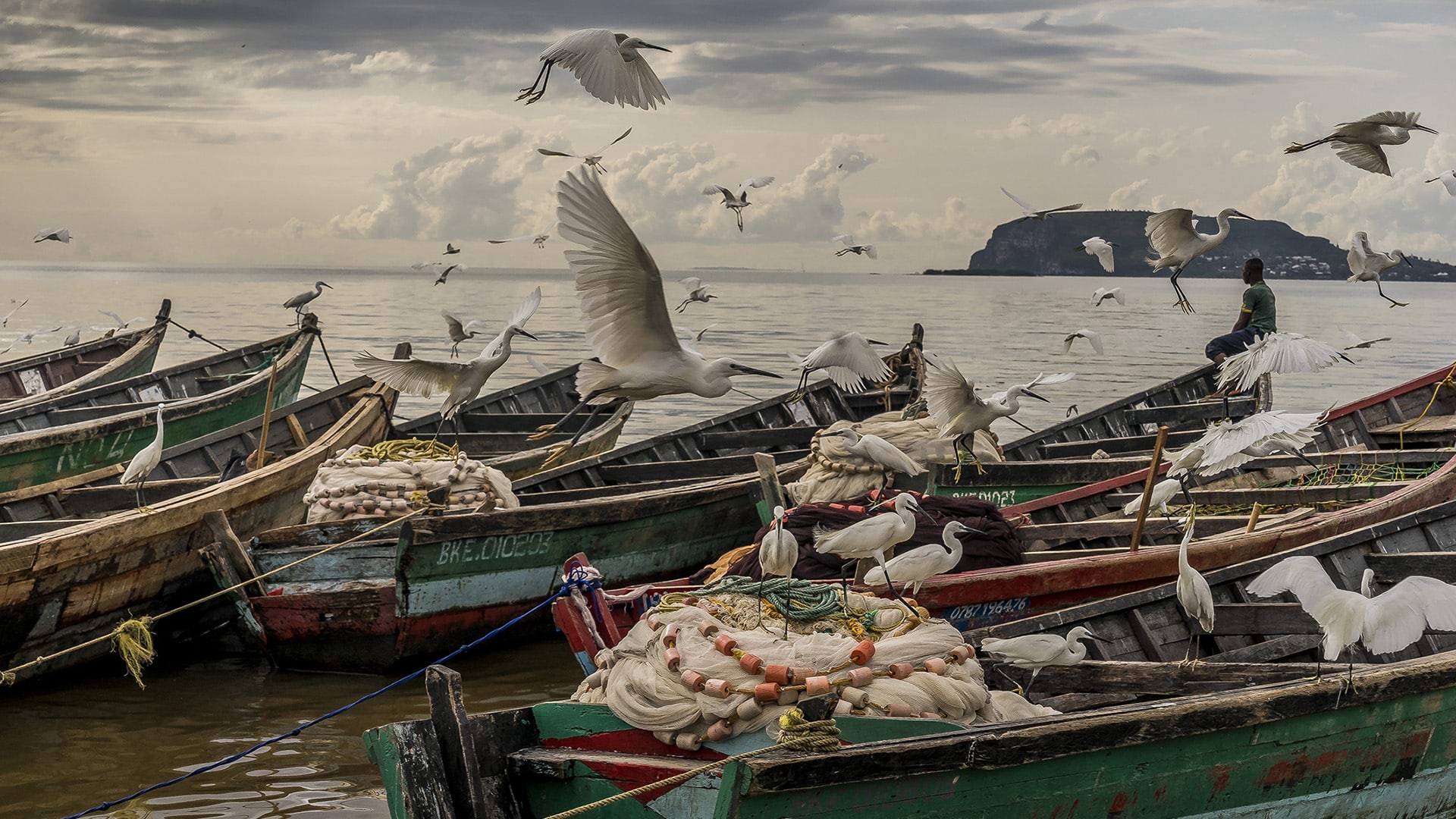
How did you get interested in Lake Victoria?
I got interested in the lake because I spent seven years in Kampala, the capital of Uganda. Uganda is one of the three countries bordering the lake, alongside Tanzania and Kenya. The lake was the horizon of my life, but I never worked on it. Then, one day, I came across a quote by professor Nyong’o who said that in fifty years, unless we do something, Lake Victoria would die. I was flabbergasted. I couldn’t believe it because the lake covers 26.5 square miles, which is the size of Ireland, and when you’re on the shore you feel like you’re on the Mediterranean. To my mind, the lake really represents eternity, but this is also true for the fifty million people whose livelihoods directly or indirectly depend on it. As I read that quote, I wondered: does eternity ever end? It was then that I thought it would be interesting to do a project about it to understand why the lake is endangered. The project is called The Slow Agony of Lake Victoria. The operative word here is not “agony,” but “slow.” This agony is so slow, so imperceptible and invisible that only a long-term project could possibly pick up on those signals and understand why, when taken together, they indicate that the lake is in danger.
“To my mind, the lake really represents eternity”
What are the threats to the lake?
There is a whole set of threats. The first is industrial pollution. There are many lakeshore industries which dump their waste into the water. There is also agricultural runoff, human waste, detergents… In the photos, you can see people washing their dishes, clothes, cars… They do all this in the lake. Overfishing is another major problem. Over the years, excessive fishing brought the average weight of a perch (from the Nile) has gone from 50 to 10 kilograms.There are a host of things, which is why I had to move from topic to topic in order to understand why the lake is dying and why this death is slow.
You demonstrate that there is a series of problems related to the exploitation of the lake. Since you have an insight into the whole continent, do you feel that all the issues affecting Africa are crystallized in this place?
Indeed. The shores of Lake Victoria sum up the life in Sub-Saharan Africa: there is no armed conflict, but survival is the primary, and the most challenging, aspect of daily life. Anything that affects their existence puts them in danger.
I imagine that while working on your report, you met with some local inhabitants. Are they concerned about these issues?
They are not aware of their existence, so they are not concerned about them. It is difficult to talk about the environment to people whose main problem is to support their family. And you must know that every fisherman has eight dependents. There are in total some four million people who live off of fisheries. This is an essential means of livelihood, so for them what matters is not protecting the lake, but surviving and living. How can they realize that the lake, which is so big and which fed their parents and their grandparents, is endangered, if, even now, they are managing to survive off of it? The idea of the agony of the lake is in fact an idea larger than the life of any individual. It is hard for an average person to grasp the implications of an activity that stretches beyond their own existence.

You do an excellent job of conveying the contradictions of the lake: a space that is as harmful as it is beneficial; hopeful but also diseased. How do you feel about that?
This is precisely the underlying message of this story. I believe that the subjects addressed fall between two extremes. As you point out, on the one hand the lake is the horn of plenty, but on the other it is an element of danger and is itself in danger. People who live around it oscillate between the two, because their reality is complex. Who are the good guys? Who are the bad guys? What should one do or not do? How to change the situation? Is it even possible to change it? I have tried to document the full complexity in my narrative.
Do you have a photograph you would like to comment on?
Yes, the photograph showing Tanzanian fishing boats returning to harbor. The fish attract white egrets which alight on the boats. The night before, two storms passed over the lake, hence this stunning light. Originally, I went to that spot to photograph a whole other subject, and suddenly I saw these egrets, and I felt this would make a good image. I stayed there for an hour, photographing, but I wasn’t happy. I was convinced that I had missed a potentially beautiful photo. Months later, I looked at this series of images and realized that one turned out really well: it was one of the very first I took that day.
From a symbolic standpoint, these birds circling above the boats are a bit like ever-present death. The lake has seen many tragedies. But in the background, there is a man who is looking across the water and who evokes hope.
Like in the Géricault’s The Raft of the Medusa.
Precisely.

By Coline Olsina
Frédéric Noy, Lake Victoria, Slowing Dying
August 31 – September 15, 2019
Couvent des Minimes, 12 Rue Louis Bausil, 66000 Perpignan


